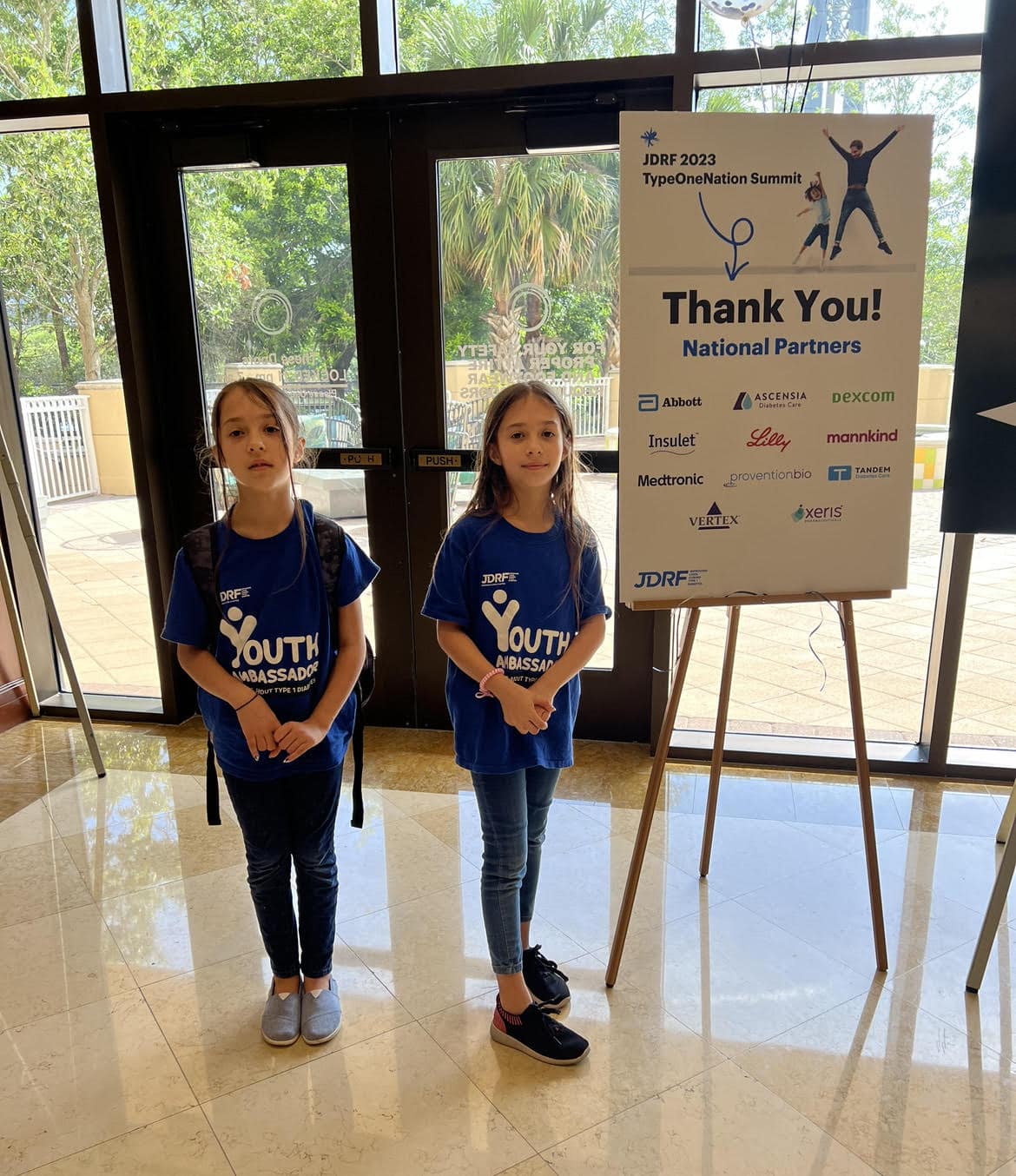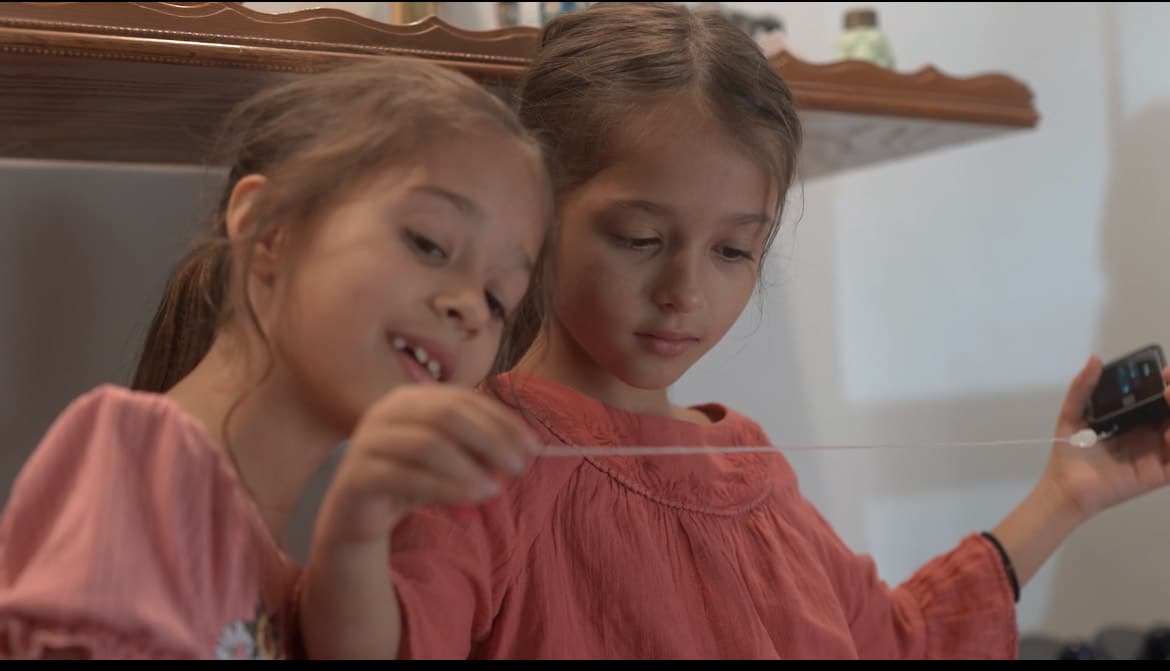Four members of a local family diagnosed with Type 1 Diabetes and the challenges they have overcome
Your daughter has Type 1 Diabetes.” And, just like that, the Deeg’s world changed forever!
It’s the type of news that no parent ever wants to hear — that your beautiful baby has developed a chronic medical condition. Type 1 Diabetes (T1D) is an autoimmune disease where the person’s pancreas stops producing insulin. The condition is chronic and needs to be managed 24/7/365 days a year to make sure glucose levels are constantly within range.
It’s an autoimmune disease that strikes both children and adults suddenly. It has nothing to do with diet or lifestyle. There is nothing you can do to prevent it, and, at present, there is no cure.
“My daughter, Savannah, was diagnosed with Type 1 Diabetes in 2012 when she was only three years old,” said Carolina Deeg of Spring Hill. “Savannah is my second daughter; McKayla is the eldest and diabetes free.”
“I was always always on the lookout for any diabetes symptoms in the children,” she said, “because my husband, Michael, is also a diabetic, and he too was diagnosed at an early age.”
The first sign that all was not well when Savannah was diagnosed was that she was so thirsty. “She wouldn’t go to sleep and kept calling for water,” said Carolina. “I’m thirsty, I’m thirsty she kept saying.”
The couple checked Savannah’s blood sugar levels, and they were dangerously high, so we rushed her to the emergency room at Brooksville Regional Hospital, where she was immediately transferred to St. Joseph’s Children’s Hospital in Tampa. “I can’t say enough good about St. Joseph’s,” said Carolina. “From the second we walked in the door, staff was waiting for her, and in the blink of an eye, everyone was making sure she was comfortable,” said Carolina.
Educators and physicians were available to train Carolina on the latest techniques in administering insulin and showed her how to check Savannah’s blood sugar levels until she felt adept at doing it on her own.
Fortunately, this was an easy process as Carolina was already familiar with her husband’s treatments, and the family was able to return home the next day, prepped for Savannah’s future daily care routine.
This was when Carolina and Michael learned about JDRF, and they received a Bag of Hope for Savannah. The Bag of Hope was full of carefully and thoughtfully selected resources for children and teens who have been recently diagnosed and their caregivers. Along with educational materials, the Bag of Hope includes Rufus, a cuddly Bear with Diabetes® — to help show children that they are not alone while learning to take injections and test blood glucose levels.
“That was the year when we made the decision for me to stay at home with the children and homeschool them,” said Carolina. “Being able to homeschool helped us a lot as we could make sure she had really good care 24/7.”
Two years later, in 2014, Carolina and Michael welcomed two more daughters to the family — twins Ally and Hailey. “From then on, looking out for diabetes symptoms was a priority,” said Carolina. “And then we found out Ally and Harley also had T1D.”
In T1D, your pancreas stops producing insulin—a hormone the body needs to get energy from food. This means a process your body does naturally and automatically becomes something that now requires your daily attention and manual intervention. If you have T1D, you must constantly monitor your blood-sugar level, inject or infuse insulin through a pump, and carefully balance these insulin doses with your eating and activity throughout the day and night.
Insulin is not a cure for diabetes. A significant portion of your day will be spent with either high or low blood sugar levels. These fluctuations place people with T1D at risk for potentially life-threatening hypoglycemic or diabetic ketoacidosis (DKA) episodes as well as devastating long-term complications such as kidney failure, heart attack, stroke, blindness, and amputation.
DKA is the buildup of acids in your blood. It happens when your body doesn’t have enough insulin — your blood sugar levels become too high and for too long. Your cells can’t use the sugar in your blood for energy, so they use fat for fuel instead. Burning fat produces acids called ketones. The build-up of those acids can change the chemical balance of your blood and upset your whole system.
It’s a very serious complication of diabetes and is life-threatening. People with T1D are constantly at risk, and care must be taken not to miss meals, for example, or get sick or stressed, according to JDRF. “Diabetic ketoacidosis symptoms can appear quickly,” said Carolina. “Some of the symptoms include dry mouth, feeling thirsty, nausea or vomiting, fatigue, flushing, and confusion.
Should too much insulin be given, there’s the chance of going into a coma; too little insulin and you can go into diabetic ketoacidosis (DKA).
Hailey suffered one such episode. “We rushed her off to the hospital where they gave her an IV to bring her ketones down and lots of fluids to rehydrate he and bring her blood chemistry back into balance,” said Carolina.
Diabetes affects everything. Not just the child with diabetes but the whole family dynamic.
McKayla and Carolina are the only two in the Deeg family without diabetes. It’s expensive. It’s taxing on the emotions of the caretakers, and it can take a toll on families. “McKayla has helped her siblings tremendously,” said Carolina. “Before there was continuous glucose monitoring (CGM), it was McKayla who would alert me that Savannah was low. She would hear Savannah making distressing sounds, not loud enough for me to hear from my bedroom. And come wake me up,” she said.
Managing T1D has become a lot easier nowadays thanks to being able to wear an insulin pump. It’s about the size of a small smartphone, has a display screen, a place for the insulin container, and a thin tube with a needle that attaches to your body. This device monitors and delivers insulin to manage blood sugar almost the same way as your body would: a steady flow when you need it.
As well as new technology to deliver doses of insulin, there is now also a cap on the price of insulin. Big Pharma is lowering the cost by as much as 70 percent benefiting millions of diabetic sufferers and capping. “Thankfully, diabetes, its costs, and all the worry hasn’t broken us, as stressful as it can be,” said Carolina. “I not only have to be extra vigilant being a parent to Type 1 diabetic children but also because my husband is diabetic. Our lives revolve around numbers, insulin, and the children’s feelings.”
“The reward is seeing our children thrive, “ smiled Carolina. “We are very proud of them all and Savannah and her involvement with the JDRF.”
Hundreds of thousands of Americans today are living with T1D, and that number is increasing at an alarming rate, according to JDRF. Call your doctor or go to the emergency room right away if you notice any symptoms in your family.





